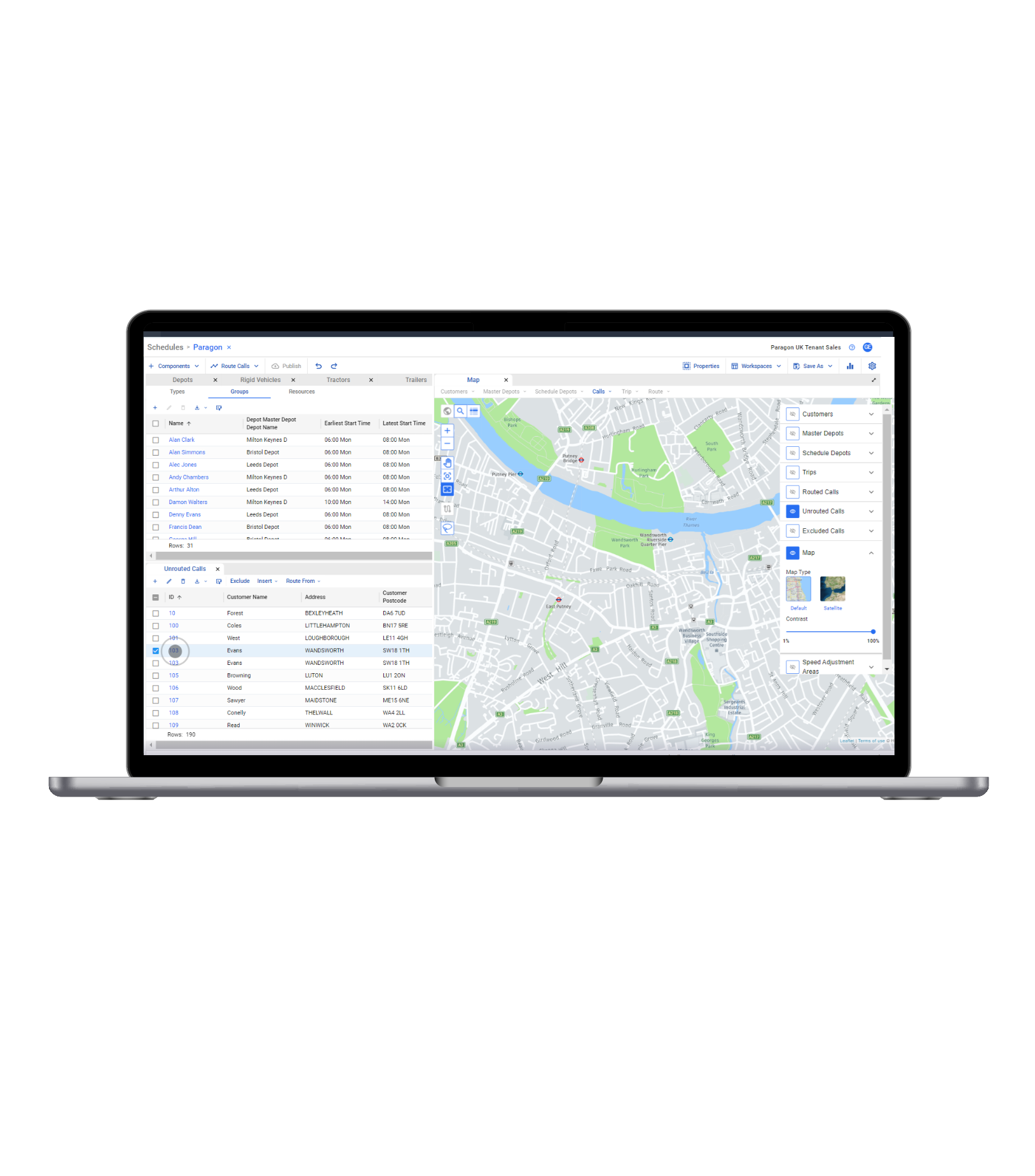Integrating Your Vehicle Tracking System With Routing and Scheduling Software
Integrating Your Vehicle Tracking System With Routing and Scheduling Software
Integrating Your Vehicle Tracking System With Routing and Scheduling Software
17 Juni 2020
 Manog Tseung | Product Manager
Manog Tseung | Product Manager
Cost is a major logistics challenge for any delivery operation. Fuel prices and road congestion have a significant impact on profitability for every operation. Efficiency and productivity are constant issues but they are not the only considerations in the highly competitive food manufacturing sector.
The drive for financial savings always has to be balanced with critical factors such as meeting demanding customer requirements. Our latest client survey backs this up, with over three quarters of transport planners claiming that their organizations had adapted their delivery offering in the past 12 months to meet customer demand.
Here is how one UK food manufacturer is using routing and scheduling software to boost service levels, while at the same time maximizing transport efficiency. This company operates 12 production facilities and 14 depots – producing more than two million items a day – with deliveries made to 18,500 retail customers each and every week.
Integrated Telematics and Routing & Scheduling
The company wanted greater visibility and control over its distribution operation, which makes 16,000 deliveries a day from 24 sites nationwide. It was looking to reduce costs as part of a wider efficiency program, but this could not be achieved at the expense of its commitment to quality and service.
The biggest change for the company was the implementation of vehicle tracking across its mixed fleet of 800 commercial, adopted alongside our Route Execution module. This has made it possible to measure how the delivery operation is performing against plan using live tracking information. The company can also analyze historical data to identify trends and areas of improvement. This means it can continually adapt and remodel the operation to target the highest levels of customer service, operational efficiency and fleet productivity.
Using Street Level Mapping has provided far higher levels of accuracy by having access to all residential streets, one-way streets and left and right turn restrictions. Schedules can be planned to the nearest second and meter, which is helping improve the development of efficient routes, especially in urban areas.
Real-Time Visibility
Using Multi Depot software to achieve a centralized route planning process for multi-site operation, when used in conjunction with the vehicle tracking system, can better monitor and manage fleet resources in real-time.
As a result, the office-based transport team is able to log-in to monitor performance and make sure drivers are keeping to plan. This means the company is immediately alerted to any issues, with customers warned of potential delays and changes to expected arrival times. Subsequent updates of approaching deliveries can also be communicated based on live positioning information.
The company is committed to giving its drivers the tools needed to complete their jobs in the best and easiest manner. With this in mind, all plans are also uploaded to in-cab satnav devices, which helps them keep to planned routes.
Continuous Improvement
The company has been able to target continuous improvement using the added insight provided by the integrated telematics and routing and scheduling solution. Using highly robust and accurate data, it can measure a series of KPIs and benchmark how the operation is performing.
Delivery performance against plan is a critical measurement for the company, which track whether the distribution operation is keeping to the most efficient and optimum routes. This has resulted in a tangible improvement in service levels, with a 15 percent increase in on-plan delivery rates.
Historical data is being used to ensure plans are as efficient as possible by identifying any areas of underperformance. For example, planners can discover if any routes are incurring excess mileage or driver hours, while arrival times and stop durations pinpoint any customer sites that are causing unnecessary delays. It is also supporting strategic planning – such as ensuring warehouse locations are in the right place – and providing business intelligence that is helping remodel aspects of the supply chain.
In fact, the ability to capture robust operational insight means the company has higher levels of credibility when making changes to the logistics infrastructure. By basing decisions on actual data has made it easier to engage with stakeholders – whether senior management or drivers – to gain buy-in and communicate clear objectives.
If you’d like to know more about how our routing and scheduling software enables you to take advantage of real-time data to optimize your transport planning, contact our team of industry experts today. We’d love to talk.
Haben Sie die Produkttour ausprobiert und sind Sie bereit, loszulegen?
Buchen Sie noch heute Ihre vollständige Demo mit unserem Team, um zu sehen, wie unsere fortschrittliche Routing-Software Ihnen helfen kann, die Leistung zu steigern.



